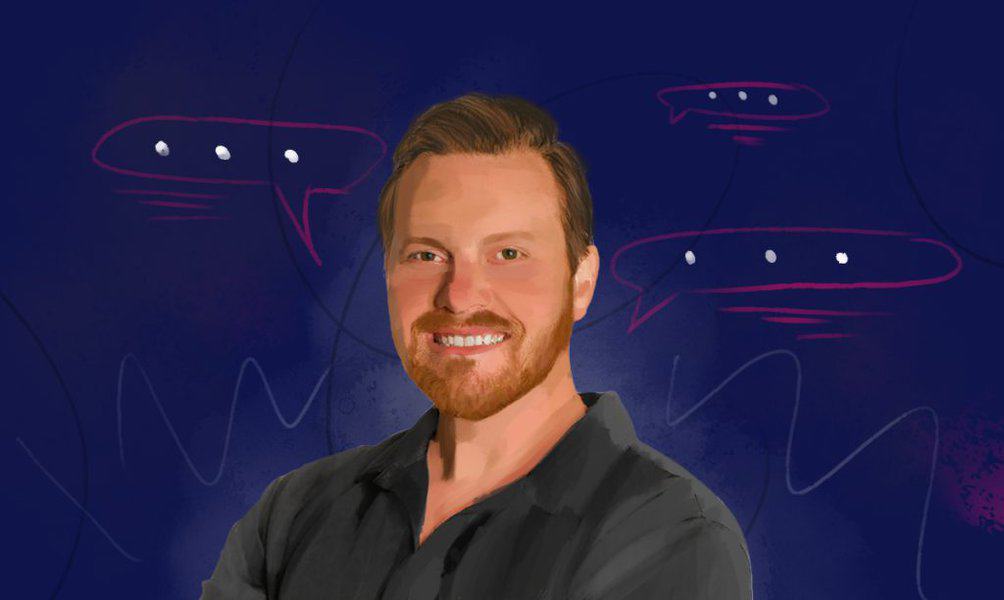Today, we’re thrilled to have James Kaatz, co-founder and CEO at Illumination Marketing, join us to discuss various aspects of modernmarketing ...
Nico Verba on Mastering Marketing and Branding Strategies
Written by: Howard Tillerman
Howard Tillerman is the Chief Marketing Officer for Making That Sale and an award-winning marketing professional.
Edited by: Sallie Middlebrook
Sallie, holding a Ph.D. from Walden University, is an experienced writing coach and editor with a background in marketing. She has served roles in corporate communications and taught at institutions like the University of Florida.
Updated on February 5, 2024

Nico Verba on Mastering Marketing and Branding Strategies
- Introduction to the Marketing Journey
- Crafting a Winning Branding Strategy
- Building and Optimizing Sales Funnels
- Digital Marketing Landscape and Emerging Trends
- Reflection on Recent Google Updates and Industry Impacts
- Productivity Practices and Essential Tools in Marketing Campaigns
- Guidance for Newcomers in Marketing and Sales
In this engaging interview, marketing expert Nico Verba, with nine years of experience, shares his journey from entering the marketing world to becoming an independent consultant. He discusses his approach to branding and sales funnels, emphasizing simplicity and customer-centric storytelling.
Nico reflects on the impact of AI tools like ChatGPT and the effects of Google updates on digital marketing. He also offers insights into effective marketing strategies, productivity tools, and advice for newcomers. His perspectives provide a deep understanding of current marketing trends and the importance of practical experience in the field.

Introduction to the Marketing Journey
MTS – How did you start in the marketing industry? How long have you been in the industry?
Nico – I’ve been in marketing for around nine years, and I started because I felt a certain attraction to the data, the details, the persuasion side of things. So, I generated my own role. In my first job, I came up with something that would work better for someone I knew, and that’s how I started. It’s a long story, but I’ll try to summarize it for time and convenience. I was first rejected from one job that I liked, and it was these tough interview sessions. Then, I started working with this health industry application company, and that interview was tough and long, too. After that, I got into a retail industry company and started with performance marketing (my background is in performance marketing). Then, I went to the new insurance technology industry with the same team I was in.
I had a few independent clients while I had these full-time jobs. So, I started doing independent things and having more clients. At one point, I dropped the full-time job and started dedicating myself fully to the independent side. I also had the opportunity to lead an agency team for a while, but then I came back to being fully independent, and that’s how I’m here.
Crafting a Winning Branding Strategy
MTS – How do you approach developing a branding strategy for a new client, no matter the niche?
Nico – I like to have a simple approach to marketing in general, and that’s also how I like to work. I’m not the ideal guy to be in a huge corporation and have these complex things. I know how they work, but it’s not what I like. What I like is helping smaller startups and smaller businesses (I call them practical entrepreneurs) develop simple systems. That’s my strategy approach, and I’m still developing it.
I have a system, a method that by no means is something I created. I took the best things I’ve learned over these nine years from great resources and people who know a lot and created this simple system for a brand strategy approach. It’s based on storytelling, which has been working for 10,000 years and is still effective.
I start with the hero of the story. The most common mistake that brands make is they put themselves (their brand) as the hero of the story they’re telling, so they start talking about themselves a lot. Whoever visits, for example, their website, doesn’t care about that. We don’t care that your grandfather created this and what their story was. Customers just want to know how the brand can help them, so that’s how to approach and leverage all your experience (or your grandfather’s experience) — how it can help customers, who are the actual heroes in this story.
We start defining the customers. I also always encourage people to be specific about who they define. Unless you’re a famous guru, no one will care if you’re offering something super generic (like if you’re in sales and making sales courses to help people sell better). For people, for example, attention spans are so low on social media. Where the perceived value must be super high for someone to pay attention, it’s way better if you’re specific and solving something relevant to a specific group. For example, that can be someone who has kids and only can dedicate two hours a day because they have a side hustle. Many people won’t resonate, but those with kids will pay attention and likely be able to differentiate when you get specific.
This applies to the whole strategy approach, not being specific just for the sake of it. Then, we understand the heroes of the story (the customers) and what they want. That’s also one of the main things that we think about. I usually go about it in a simple way, which is to think about what someone would search on Google. That’s basically what they want, and we aim for that specific part. Then, I’ll even pull up my worksheet. I’ll go over the rest of my system briefly.
After understanding who the story’s heroes are, the first thing we analyze and break down is their problem. They have external problems and internal struggles that they go through. There are some philosophical problems as well. We also define who’s the villain of the story. That’s the second or third section of my worksheet.
Then we come to the guide — which is the role of brands. They are mistaken in thinking they are the heroes, but they are just the guides. It’s a great role. They have competence, they’ve been there, done that, and they can help. They also empathize because it’s important that people feel close to them. t I do in that section.
The next section is the solution, which is explained in simple steps so people won’t get confused about the process, their objections, and the excuses they make to themselves for not solving the problem that the brand solves. We think about guarantees we could offer to fix or block those objections. Then, as in every film or story, there’s the guide, which calls the hero to action. They not only tell you, “Here’s the plan.” They also say, “Go get it now!” It’s a direct call to action. The most simple example is “Buy now” for e-commerce, but it can be any direct call to action that leads to the main conversion or objective of the business.
Then comes the intermediate call to action, which are leads. So if you have a free course or any lead magnet, that’s going to be the intermediate call to action, relevant to it, and critical for getting people to move to action by showing them the failure situation. What would the failure look like if they didn’t solve the problem that the brand is offering? You don’t need to use this a lot because people will only turn off their minds if you speak about all the bad things that could happen if they buy from you to solve the problem or get what they want. But a little bit of it is really necessary. It’s like salt. You put a little bit of it, and the food’s great. Put a lot, and it’s ruined. But then the “mission accomplished” is something you can use a lot more. That’s what I called the situation where they solved the problem that your brand was offering a solution for and got what they wanted. You paint a big picture of what that looks like. What would life look like if you solved the problem that we’re offering? That’s critical. It’s the benefits also of purchasing and the whole approach.
For transformation, which goes along the whole story, I usually use “from” and “to” to describe the transformation the brand is suffering. So, from something to something great. Usually, this “to” field is filled with the mission accomplished — from uncertain to relieved or whatever your brand specifically helps and achieves in an aspirational identity transformation style.
Building and Optimizing Sales Funnels
MTS – Describe the methodology to create and optimize effective sales funnels.
Nico – I’ve just described the foundation of the sales funnel. The strategy is the foundation, and the sales funnel is what you build. There’s never a simple, easy three-word way to describe a sales funnel. Basically, what you build supports your strategy or the fuel that supports it.
You can think of a sales funnel as a buyer’s journey. It starts when someone thinks about a problem or the problem that your brand solves. Then they research, find out more, find out about your brand, become aware of your solutions, and slowly, and after a few interactions, they become ready to buy, and then they buy. That’s what the sales funnel tries to cover most efficiently. Of course, the strategy is going to lead those efforts.
The sales funnel that I like is super efficient. It’s ideal and optimal. It’s not the same for every business, but it’s usually built around these few marketing channels (and it’s not even required to have a large budget).
Google search is always a low-hanging fruit with a system that, to summarize, focuses on having the highest rate of relevant ads and relevant searches. The first time I check their Google Ads platform, I see that most brands and every client think they are doing effective campaigns, but they are usually wasting over 90% of their budgets on display ads (and they didn’t know that they were running display) or on searches that are too generic. More than 80% of those searches come from people looking for something irrelevant to what the brands offer. If you have an employee communication app, it’s specific for someone who works at a company that needs a solution for their employee communication. It’s broad, but it’s also specific. So, someone searching for “communication” will likely not be relevant as they could be searching for anything around communication. It happens with every brand. Search is one of my favorite parts of the sales funnel.
I help create simple but effective lead magnets to grow the brand’s email list and email sequences, both nurture sequences (classical weekly newsletter tips) and announcements. What many companies miss is that they don’t have a sales sequence. The sales sequences are efficient, especially after they download your lead magnet. It can be four, five, or six automatic emails sent every 48 hours after downloading the lead magnet (that would be my recommendation). That, again, always puts the customer first. Those are all valuable emails. Why? Because they are helping them solve the problem. They have to get what they want. This goes along with the strategy that we developed earlier. They want something. They have these problems. So, the brand develops a lead magnet that solves a narrow problem. For example, I help people grow their brands, but my lead magnet may only help them develop the strategy, and then you hire me to implement the sales funnel and the whole marketing ecosystem. So that’s how lead magnets work — solving a narrow problem. With that lead magnet download, you have super important customer information. If they download it, you know what they want and the problem they have, so you address these kinds of things with the sales sequence.
Last but not least — because it’s how businesses pitch their offers — is website optimization and ensuring they’re saying the right words. I’ll give everyone a 15-second SEO course with this. If you don’t have a huge budget and a lot of resources to do SEO, just solve the five most common questions or problems with one article for each. That’s pretty much it. Have the main meta tags and SEO tags on them, and that’s like 90% of SEO done. The rest is long-tail.
Digital Marketing Landscape and Emerging Trends
MTS – What significant changes have you observed in digital marketing recently, and what trends do you see that will impact the industry in the future? What do you think about ChatGPT?
Nico – I have a somewhat contrived take on the tool side. ChatGPT or any other AI tool are just tools; the people are just people. When we look at it that way, that’s how it’s always been. This is just a new tool; people are doing what we’ve been doing every decade or century. People who rely completely on ChatGPT to write their content or build their business are the same people who choose the easy path not to make an effort.
There will always be an excuse to do something easy. That’s why so few businesses thrive, especially those that thrive for a long time. It’s because it’s hard. There’s no AI or anything that will stop it from being hard, and I appreciate that because otherwise, everyone would do it. So if you want it and you are willing to make a huge effort, then that’s still the only way that you’ll make it work. There are some things that shine and look attractive, but they are not gold. They are tools that, if you are on the effort-making side, then you can leverage those.
I use ChatGPT, for example, as a brainstorming partner because it’s usually a lot better to edit things sometimes. I will ask it to write a first draft or whatever, or I’ll ask for options for a headline. It’s easier for my brain to correct than start from scratch. Those things are great to have a free, immediate sparring partner to improve your skills. But you still need to make an effort to come up with the right one. So it’s not something that you just get the fish. It’s just a new way to fish.
Reflection on Recent Google Updates and Industry Impacts
MTS – How do you think the Google updates impacted things regarding traffic? What are some other things that you think might impact the digital marketing industry this year?
Nico – I didn’t have any firsthand experience with those cases, but that’s the rules of the game, and it happens with Google and with social media. That’s why we must be prepared. For example, I know newsletters or email lists are a way to own your audience, and that’s something strategic that every brand must do all the time. This time, it’s Google. Next time, it will be another channel or social media that disappears or whatever. The core of your business is potentially your email list, your CRM, and especially your customers. A solid structure and a sales funnel to transform visitors into customers, or at least leads, is the best thing a brand can do. I know it might be late for this Google traffic crash, but it’s not too late for the next platform that will disappear.
Productivity Practices and Essential Tools in Marketing Campaigns
MTS – What practices or tools do you use to maintain high productivity in marketing campaigns?
Nico – As I said, I’m the simple guy. I see most people always ask about what the right tech is and what the right tool is. I always go to the simple things. Marketing is broad. Many things can be done with marketing. For example, if I had to summarize the five main tools for marketing and develop a complete sales funnel, those would be Google Ads, Google Docs (for the PDF and a lead magnet), Google Sheets (for the analytics and calculations), an email platform like HubSpot (you have the CRM as well there) and a website that costs like $19 a year. You have a business with that.
Guidance for Newcomers in Marketing and Sales
MTS – What advice would you give someone just starting a career in marketing and sales? What would you have liked someone to tell you when you started?
Nico – Fortunately, I didn’t need someone to tell me this, but I validated that it was a good approach, not only because it worked for me but because I saw other people fail at what they wanted by taking the other paths. I’m going to talk about being self-taught and taking courses. It’s just a way to put it. I’m taking courses right now, so I’m not saying courses don’t work.
It comes down to how we all try to take the easy path naturally, so it’s very common that we start a marketing career, for example, and we don’t know anything. What’s natural, what’s easy, what sounds like it will give you the solution, is taking a course — and it won’t give you the solution. Let’s say you want to take a course, then that’s great. But you should spend more time on it. Let’s say it’s a one-hour course. For any one-hour course, you should spend at least three or four hours executing that course and practicing it.
Most people will try to start their marketing careers by taking courses, so it’s just input, input, input, without execution and output. Execution and output are what gets you to develop your skills. I will even challenge you that you don’t need the course. You can just start trying and executing the ideal way. Of course, it’s with others money. If you can join a company and try things, that’s best. Otherwise, instead of spending on the course, spend on some ads or a cheap email tool. Or you don’t even have to spend. Just make a social media account and grow a following. Try to have people subscribe to your newsletter. You can do email marketing and ads. If you have a few bucks, you can create a website by just spending $19 for a year. That’s the best thing you can do to start.
Featured Resources

How to Optimize Your Marketing Strategies and Grow Revenue
Published on June 5, 2024
Read Now

How to Use Data in Digital Marketing and Boost Creativity
Published on April 4, 2024
In this insightful interview, we sit down with Jaclyn Freedman, a distinguished figure in the digital marketing landscape, to explore her journeyfro ...
Read Now

How SEO Strategies Directly Influence Sales Success
Published on March 4, 2024
In an insightful interview with Matthew Anderson, we discuss his transition from web design to digital marketing leadership, emphasizing SEO andcont ...
Read Now
